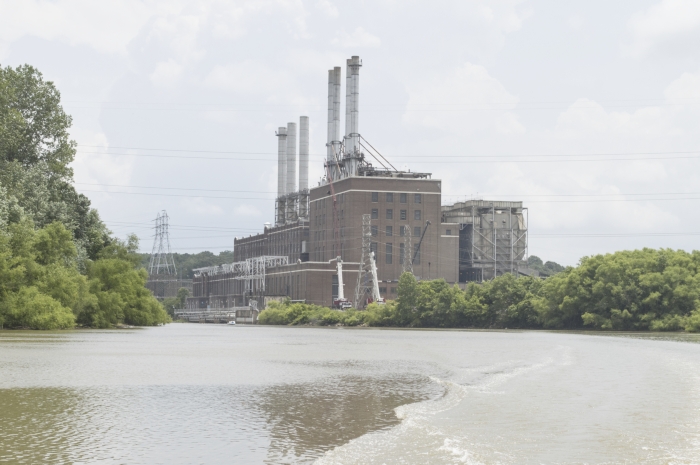Duke engineer: No evidence exists linking company to contamination
Published 12:10 am Wednesday, June 10, 2015

- Duke Energy's Buck Station in Rowan County. Josh Bergeron / Salisbury Post -
In a presentation to the Salisbury Rotary Club on Tuesday, a Duke Energy representative used levels of chemicals already present in soil as evidence that the company can’t be linked to unsafe water wells near Buck Steam Station.
Duke Energy Engineer Sean Deneale spoke during the club’s weekly meeting and said vanadium — the chemical most frequently cited on recently delivered test results — was already present in the soil near Buck Steam Station. Deneale showed two maps from the U.S. Geological Survey showing a streak of increasing vanadium levels across the Piedmont. Deneale’s statements largely echo Duke’s claim since wells near Buck Steam Station were first declared unsafe for consumption in April.
So far, 32 of 34 wells near Buck Steam Station have been declared unsafe. More wells have been tested, but results from the state haven’t been returned. Wells declared unsafe showed levels of vanadium above the state’s recommended level, but no federal level exists. Vanadium is a type of metal that’s naturally occurring and present in coal ash. At certain levels, vanadium is considered toxic by the Occupational Safety and Health Administration.
Deneale’s first map was of the entire United States. It showed a circular dot of increased vanadium concentration over North Carolina. The second map isolated North Carolina and showed a streak of vanadium across an areas starting in Charlotte, crossing Winston-Salem and Greensboro and ending near the Virginia border.
If the levels already present in soil were a result of coal ash pits across North Carolina, Deneale said increased levels of vanadium would also be present at Duke’s Asheville plant and Sutton Plant in Wilmington. Neither of the maps presented by Deneale showed a significant, concentrated area of vanadium near Asheville or Wilmington.
Chromium, also an element shown in test results declaring water unsafe, was also present in increased levels across the Piedmont in the maps presented by Deneale.
Deneale likened all groundwater to water passing through coffee grounds.
“When you grind it up and add water to it, the coffee that is produced is really a reflection or a fingerprint of the coffee bean,” he said. “It’s the same kind of thing when you’re talking about groundwater. It’s surrounded by all kinds of different soil.”
Similar to claims by previous Duke representatives, Deneale said boron and sulfate would be indicators if coal ash contaminants were truly leaching from Buck Steam Station’s coal ash ponds.
He said coal ash and soil are different in many ways, but similar in a select few. Boron and sulfate, for example, are chemicals that are frequently cited by scientists as an element that would be present if Buck’s operations were contributing to the unsafe water wells.
“Those are good trace elements because they do occur naturally, but generally much higher in coal ash for instance than soil,” Deneale said. “It’s also very soluble, meaning that it dissolves easily in water.”
Duke Energy has repeatedly denied responsibility for the unsafe wells, but provided water to families surrounding its Buck Steam Station. Deneale said the water would continue until the company completes a groundwater assessment on its buck Steam Station site.
“We’ve not had to collect or analyze for hexavalent chromium or vanadium before, and, without data on our site, we can’t definitively show that it’s not coming from us,” he said.
One point repeatedly mentioned by Deneale was that the test results for water wells near Buck Steam Station meet federal standards, but exceed some state standards. In some cases state standards are more stringent. However, no federal standard for vanadium exists.
Contact reporter Josh Bergeron at 704-797-4246.




